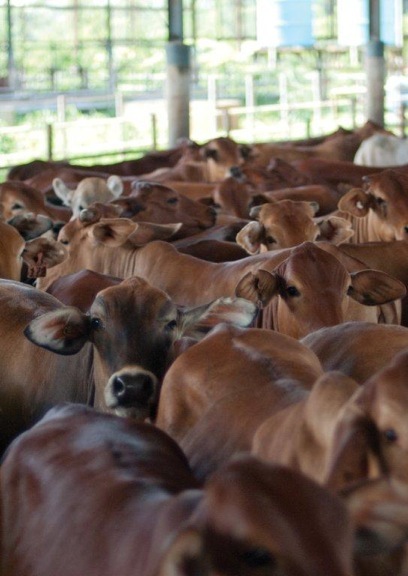Growth Opportunity for Beef Cattle Industry
 In 2013, Indonesia ranks fifth on beef consumption among ASEAN countries with 2.38 kg per person. As with other countries like Malaysia, Singapore, or the Philippines, beef consumption level is almost three folds at 7 kg per person. Another survey shows how the Indonesian beef consumption has risen and fall during a 14-year span, from 1.95 kg per person in 2006 to a peak of 3.41 kg per person in 2012. Yet, according to the Ministry of Trade, despite the consumption level, the price of beef in Indonesia has steadily increased over the last five years.
In 2013, Indonesia ranks fifth on beef consumption among ASEAN countries with 2.38 kg per person. As with other countries like Malaysia, Singapore, or the Philippines, beef consumption level is almost three folds at 7 kg per person. Another survey shows how the Indonesian beef consumption has risen and fall during a 14-year span, from 1.95 kg per person in 2006 to a peak of 3.41 kg per person in 2012. Yet, according to the Ministry of Trade, despite the consumption level, the price of beef in Indonesia has steadily increased over the last five years.
Some of the reason is because the beef industry in Indonesia is not competitive. Cattle breeding, for instance, is predominantly held by smallholder farmers who raise less than five heads in their backyard. Many of them raise cattle for savings and not for business. Meanwhile, the domestic slaughter house is sensitive to government policy changes for raw material imports, as it is highly depending on ready-to-slaughter imported cattle as well as the local fattening industry of imported cattle. Moreover, these farmers are facing fundamental challenges to expand their cattle businesses, such as limited access to capital, lack of collateral, and an over-cautious financial sector in channeling loans due to the inherited risks.
Despite the pitfalls in the domestic beef and cattle industry, Indonesia actually has the potential to become a global cattle producer for several reasons. First, it has sufficient land and water for grazing cattle, with good weather condition without prolonged dry or wet season. Second, it has large domestic market potential and abundant labors. And third, the country is one of the few countries that is free from the Foot Mouth Disease.
Beef is considered one of five food commodities defined as a strategic product by the Indonesian Government. To that end, the Government has actively sought at achieving food security and self-sufficiency through advancing domestic production and improving the infrastructure to support other agribusiness sector. Some of the Government’s agenda includes establishing a nursery in Sumba, integrating cattle with plantations, improving import regulations, and controlling inflation.
However, it is also critical that the industry has a supportive financial sector and regulatory environment. Such as innovative financial schemes to help tackle specific issues within the industry and which has a potential for country-wide scaling up. To sum it up, the domestic beef cattle industry has great growth potential and Indonesia has the opportunity to develop its own.
Cover photo: @KIBIF